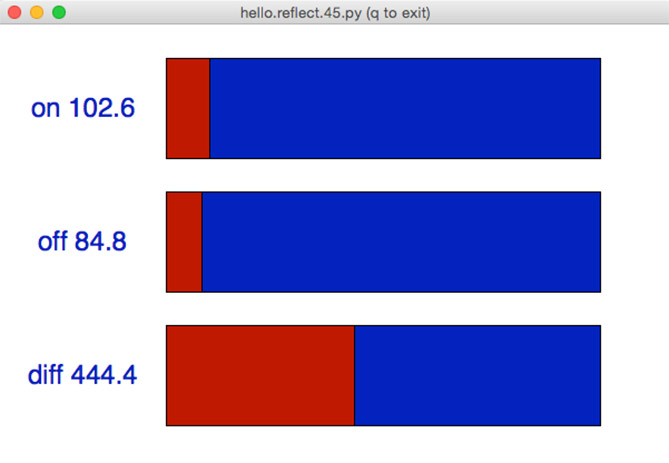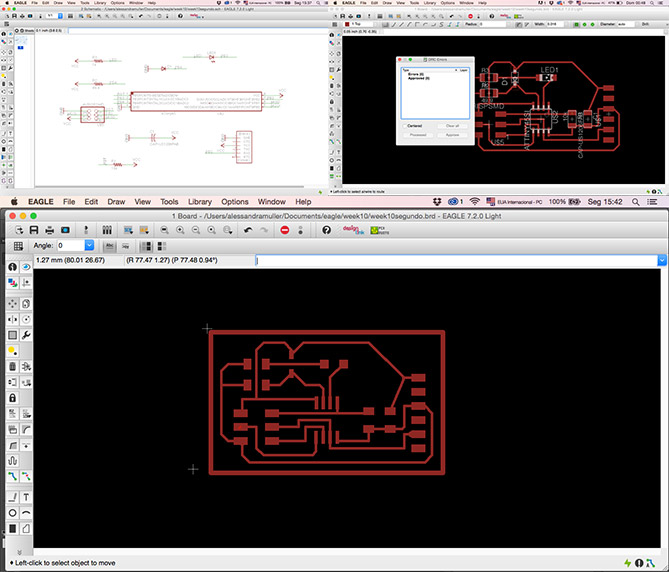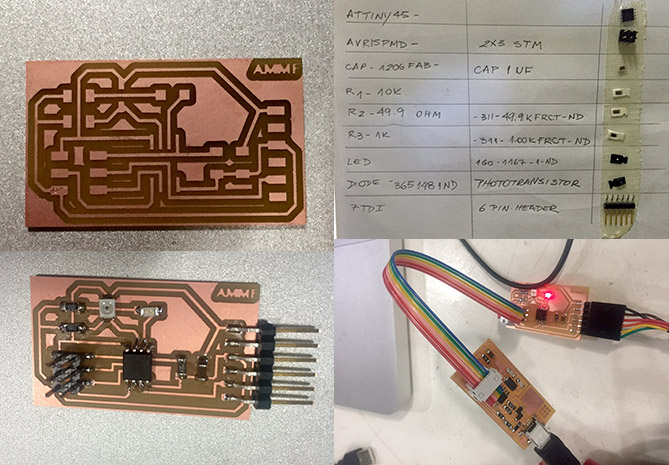Week 10 |
 |
Input Devices - April, 8th 2015
New Board |
Here we are again surrounded by electronics. This time the assignment was to design the board with input devices. I chose mine trying to be close to what I will need in my final project (Which I changed, by the way). As an input device I chose synchronous detection, and used Neil's board as a reference. Designing
3 Steps
| ||
Starting The Adventure |
To perform the measurements I used Python. On Mac it is already installed, but I have had a lot of difficulties to make it work effectively. First I programmed the board at Terminal. Everything was fine and the LED was lit up, but using Sudo previously... At Terminal
| ||
Becoming a Nightmare |
In the Terminal, after saving on my desktop the three required files in a folder that I created (hello.reflect.45.c , hello.reflect.45.make , hello.reflect.45.py) I had to experience many obstacles trying to find out what was going on, and why python didn't want to work for me!!! First Errors
| ||
Python on Mac |
After to rechecking a thousand and one possibilities, finally with a lot of help and patience of my instructor Ferdi, we could figure it out how to make it works: http://brew.sh/ ruby -e "$(curl -fsSL https://raw.githubusercontent.com/Homebrew/install/master/install)" brew install python pip3 install pyserial - You should install this (in my case) from Tkinter import * from tkinter import * - You should change this at the file print (command line: hello.light.45.py serial_port) #print (command line: hello.light.45.py serial_port) | ||
The Right Code |
 Measuring  |
|




